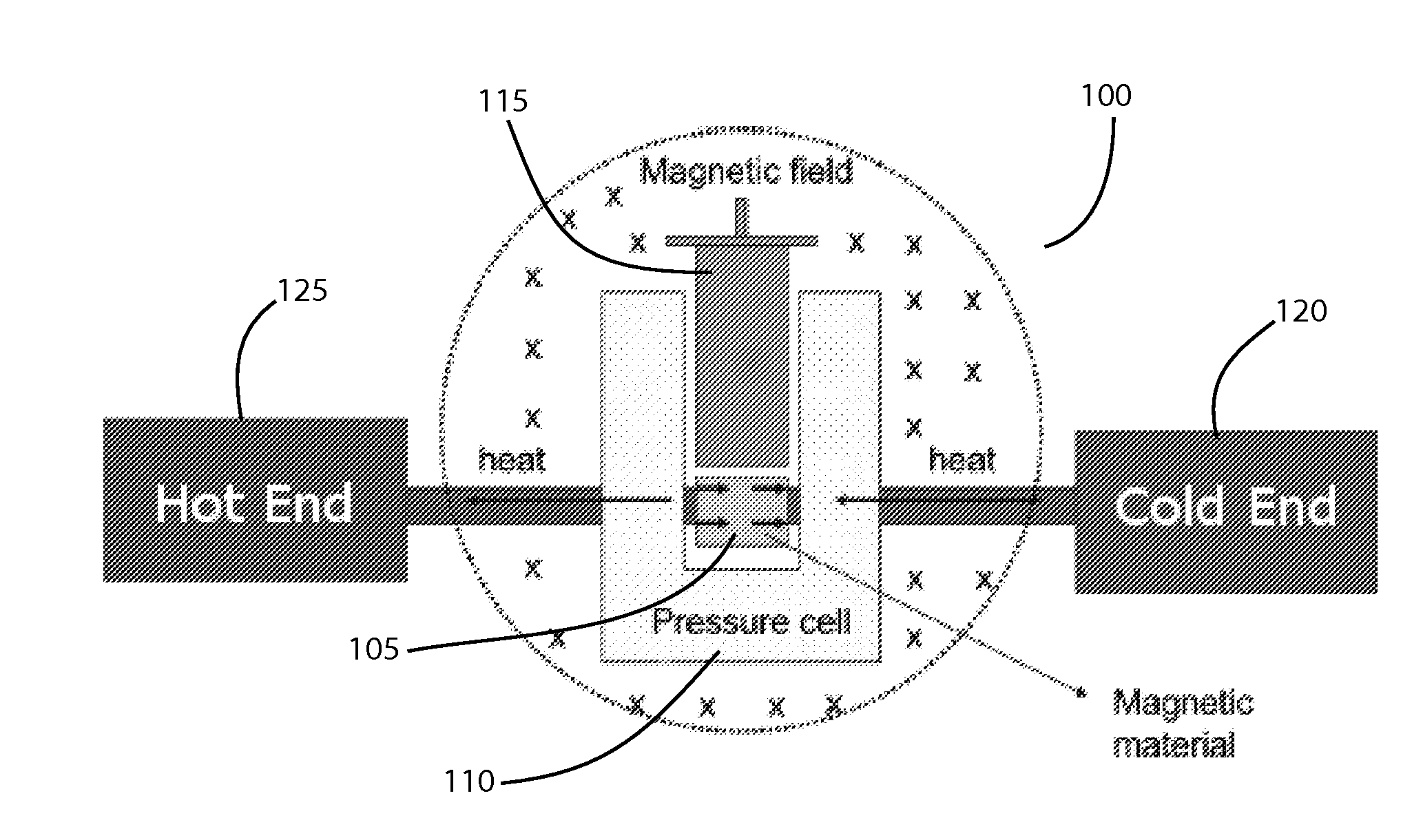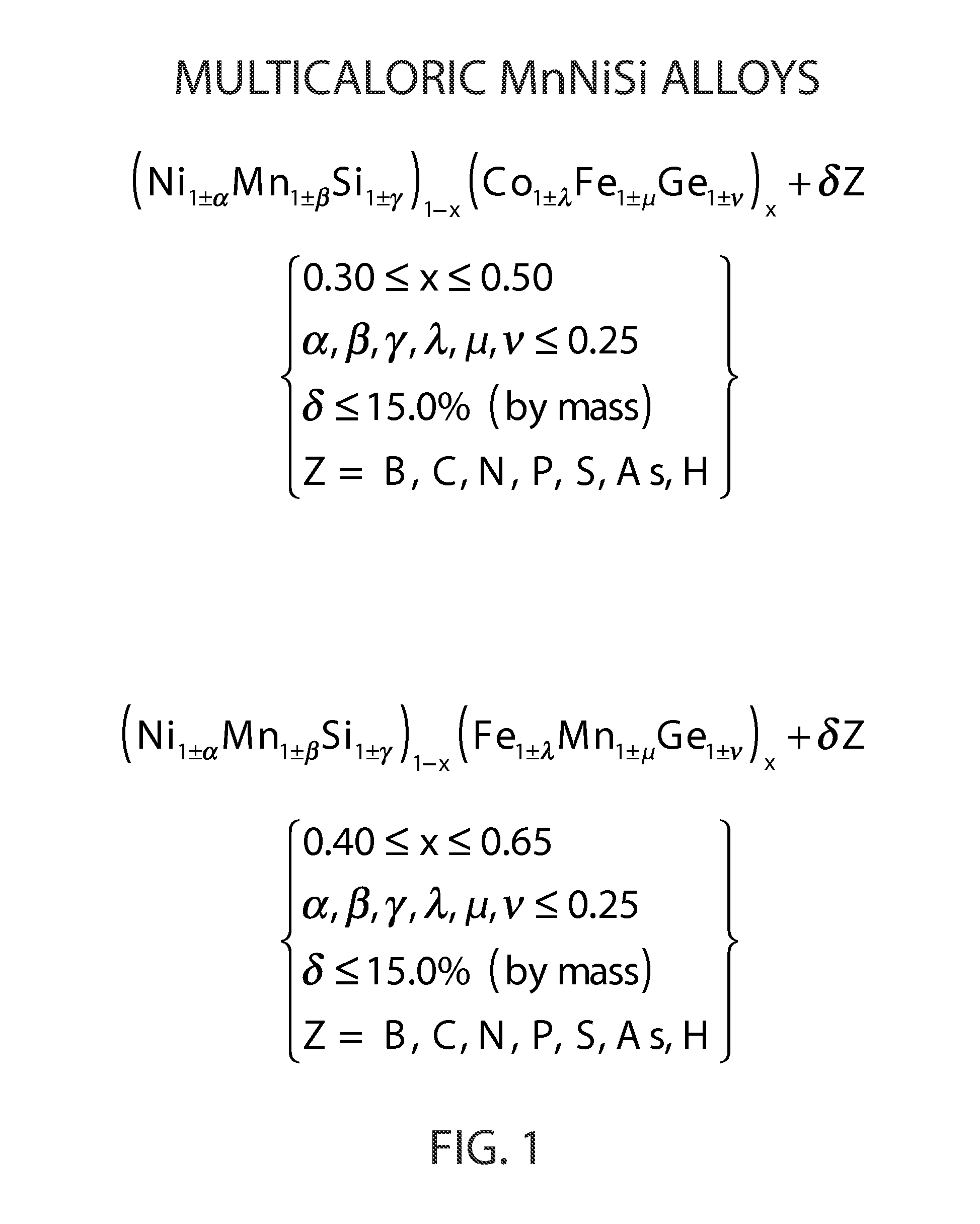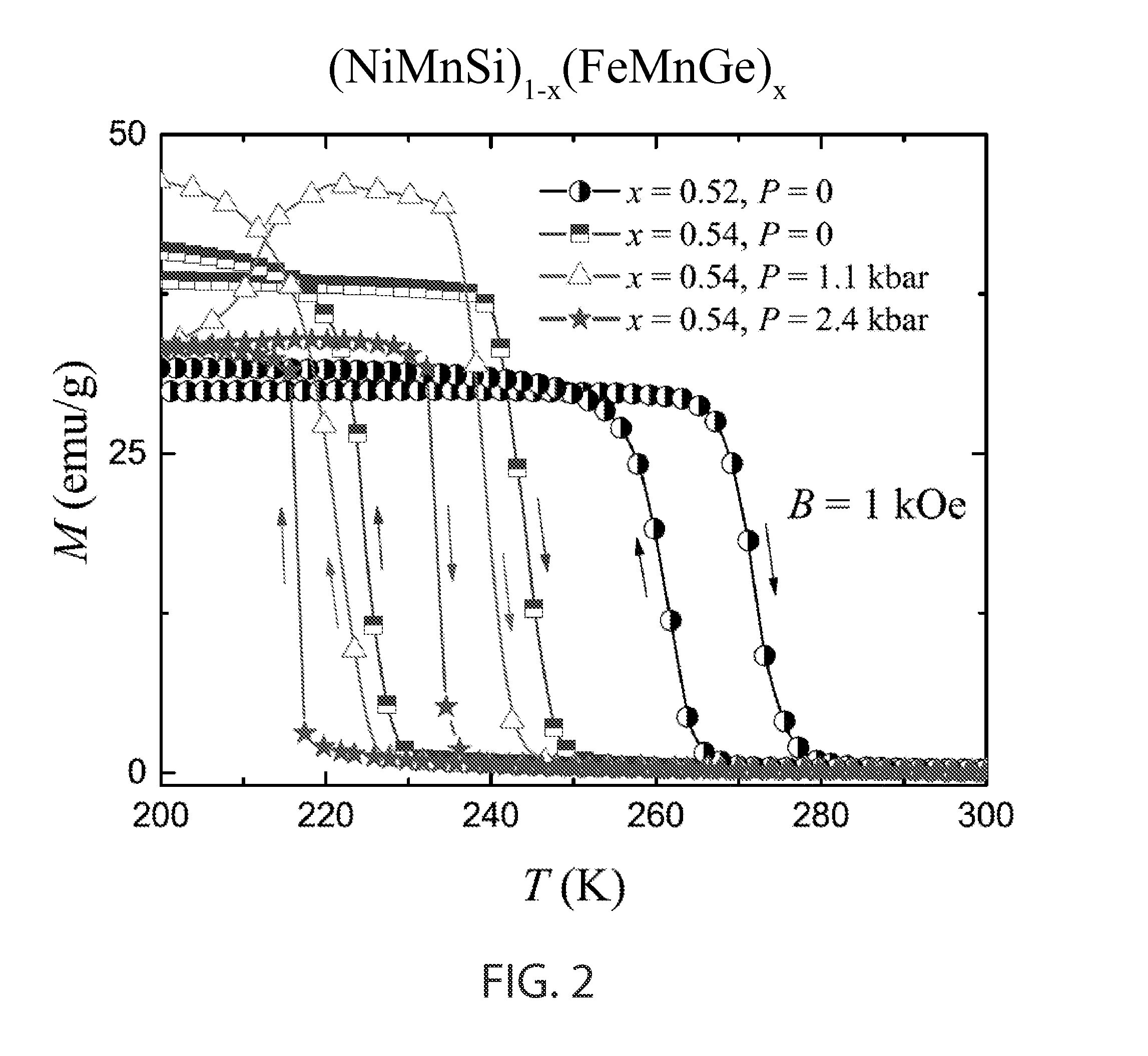MULTICALORIC MnNiSi ALLOYS
- Summary
- Abstract
- Description
- Claims
- Application Information
AI Technical Summary
Benefits of technology
Problems solved by technology
Method used
Image
Examples
Embodiment Construction
[0034]Two new MnNiSi multicaloric compositions are provided. They include (Mn1±αNi1±βSi1±γ)1-x(Co1±λFe1±μGe1±ν)x+δZ and (Mn1±αNi1±βSi1±γ)1-x(Fe1±λMn1±μGe1±ν)x+δZ, over the range of variables specified in FIG. 1, each with an optional additional element (Z). The subscript variables, α, β, γ, λ, μ, ν may be zero or another amount less than or equal to 0.25. The additional element (Z), which may comprise B, C, N, P, S, As, H, is optional. When present, Z may comprise up to 15% (by mass) of the formulation. The variable x may be from 0.30 to 0.50 in the formulation containing Co, and from 0.40 to 0.65 in the other formulation. Each formulation is based upon MnNiSi. Typically, the elemental subscripts are 1 or about 1, meaning that the subscript variables α, β, γ, λ, μ, ν are 0 or about 0.
[0035]The MnNiSi system, which exhibits a structural transition at an extremely high temperature of about 1200 K (approximately 900 K higher than room temperature), and Tc˜662 K, is quite different than...
PUM
| Property | Measurement | Unit |
|---|---|---|
| Temperature | aaaaa | aaaaa |
| Percent by mass | aaaaa | aaaaa |
| Magnetocaloric effect | aaaaa | aaaaa |
Abstract
Description
Claims
Application Information
 Login to View More
Login to View More - R&D
- Intellectual Property
- Life Sciences
- Materials
- Tech Scout
- Unparalleled Data Quality
- Higher Quality Content
- 60% Fewer Hallucinations
Browse by: Latest US Patents, China's latest patents, Technical Efficacy Thesaurus, Application Domain, Technology Topic, Popular Technical Reports.
© 2025 PatSnap. All rights reserved.Legal|Privacy policy|Modern Slavery Act Transparency Statement|Sitemap|About US| Contact US: help@patsnap.com



